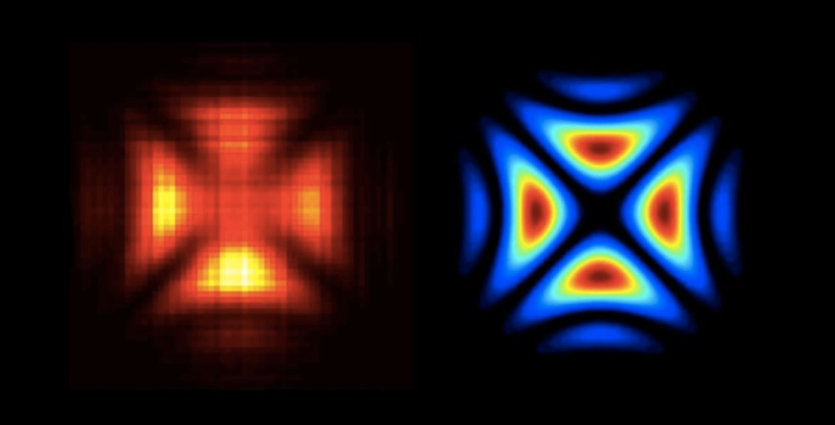Sometimes referred to as scientific fantasy or speculative fiction as well, sci-fi has been one of the more expansive genres in contemporary writing/literature. Often it takes current issues and extrapolates them down the road into potential paths and outcomes. It also provides other ways to examine ourselves and current conditions.
So one common trend of sci-fi is how to travel faster than the speed of light. Quantum physics is often invoked for such a purpose, so this following may be an interesting start point;
Quantum Leaps, Long Assumed to Be Instantaneous, Take Time
An experiment caught a quantum system in the middle of a jump — something the originators of quantum mechanics assumed was impossible.
An experiment caught a quantum system in the middle of a jump — something the originators of quantum mechanics assumed was impossible.

getpocket.com
Well, it's important to understand what the evidence does and does not show, what the theory does and does not say. Lacking any other information, the theory can't say that it is or isn't instantaneous. And for the purpose of calculation, lacking any other information, before it's this and after it's that and we don't know what's in between and how long "in between" is, is as small as we can measure.
A particle is a wave packet. The cross section of a photo looks like this.
Important for technologies that require an understanding of the shape of single photons – such as quantum communication.

cosmosmagazine.com
Particles, like a photon, are a wave packet, the variation in intensity of the electromagnetic field. Where it's black, the field intensity is zero. Where it is yellow on the left image or dark red on the right image, it is maximum.
In the direction of propagation, it looks like.. Well, the Schrodinger equation is one form. It is a self sustaining electromagnetic wave of limited extent that moves at the speed of light and looks kind a like
That represents the intensity of the field along the center of the photon, not a cross section. It's just a plot of the 1 dimensional wave equation. A density plot would be better but I've never seen one. A density function of a sound pressure wave is really the best analogy. The 3D Schrodinger equation is a solution.
It's a god awful thing. That is as in like full of the awe inspired by staring into the face of God, as it were.
Nothing in nature dissipates instantaneously. Light isn't instantaneous. The fastest the field can decay to zero is the speed at which light can travel. That's kinda the whole point of the speed of light, it is the speed of causality, the fastest speed at which change can occur. It's difficult to measure that because, well the fastest that anything can be possibly measured is the fastest speed which it exactly that, the speed of causality.
The thing is, when one point in that wave packet is disturbed, it is no longer a self propagating wave packet. The whole thing collapses. It can be disturbed at any point along that packet. The likelihood of disturbing it is proportional to the square of the field intensity along it. It is infinite in extent, just not very big so not very likely to be disturbed.
Thing is, everything is a wave packet so basically, we have one wave packet disturbing another wave packet. The electron in orbit is a stationary wave. Basically, it wraps around in exact multiples of the wavelength. To add more to it, the energy added, the wave packet has to fit right. If it doesn't fit, it won't stick. And it either all fits or none fits because it propagates or doesn't and some of it won't.
Now the big problem in science is that the precise descriptions are in the mathematics of units of distances, intensities, and densities. The differential equations are horribly difficult to solve and only a few solutions have been found, the easy ones. Schrodinger found one. So we have pieces of what they can look like in mathematical for.
And then we can do experiments that fit the theory and the known solutions. Like the one that shows the timing of the quantum leap, or collapse, or the one that shows the field equation across the width of a photon, they add up to a coherent picture.
At any point in time, we have only a handful of experiments that demonstrate something that fits the equations and theory. And where we don't have that, we just take it as to be instantaneous because saying it is anything else is kinda claiming we have an actual number.
Graphics on computers have gotten much better and there are some good videos on YouTube that present some different aspects of this stuff..
I kinda like this one
But they are all just approximations to the whole thing, analogies to what it is.
Someday, it would be nice too see a solution to two interesting wave packets such they line up just right and what the trajectory and conditions of that must be in order for them to be absorbed vs going off in different directions
:extract_focal()/https%3A%2F%2Fpocket-syndicated-images.s3.amazonaws.com%2Farticles%2F5753%2F1600871090_Screenshot_2020-09-23QuantumLeapsLongAssumedtoBeInstantaneousTakeTimeQuantaMagazine.png)
 getpocket.com
getpocket.com
:extract_focal()/https%3A%2F%2Fpocket-syndicated-images.s3.amazonaws.com%2Farticles%2F5753%2F1600871090_Screenshot_2020-09-23QuantumLeapsLongAssumedtoBeInstantaneousTakeTimeQuantaMagazine.png)

